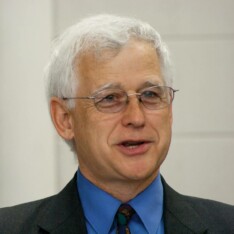Liberation From Lockdown Now

Most governors in the United States have shut down their economies, requiring people to shelter in place. The measures are destroying one of the world’s strongest economies before our very eyes. We’re also relying on the very same governments that spent many weeks sending contradictory messages, blocking testing, and generally being ill-prepared also to manage us out of this mess.
“For a family sitting around the dinner table tonight,” said Dr. Nancy Messionnier, a spokesperson for the CDC on January 17; “this is not something that they generally need to worry about.” Anthony Fauci said on January 27 that “the American people should not be worried or frightened by this. It’s a very, very low risk to the United States.”
The narrative changed less than two months later and panic ensued. The lockdown came. Since then, more than 16 million workers, over 10 percent of the labor force, have filed for unemployment benefits. Most have done so not because they hate their jobs or don’t want to work or (unlike in typical economic crises) because there is no demand for their efforts, but because state governments are forcefully preventing them from working.
The ramifications are astonishing. Travel bans have separated families. The mandatory closings have shattered life plans. Tens of millions of Americans suddenly face wreckage unthinkable just six weeks ago. Everyone is being told to adjust to a world in which we have lost much of our control over our life decisions. And there’s no end in sight.
Congress and the President quickly produced one of the most expensive spending bills in history, a bill that, tragically, will pay tens of millions of workers more to be unemployed than to work. The politicians claim that their spending is “stimulus,” but it’s not and it can’t be. A government cannot stimulate production that it has forbidden.
The only way to stimulate the economy is to liberate it. The people, all of us, need emancipation from the lockdown. And we need it now.
Many people fear the consequences of letting tens of millions of people go back to work. I’m afraid. But we can’t continue as we are. Some say that we need to discuss when to free up the economy. No. We needed to discuss it long ago. The time for discussion has passed. We are surrounded by wreckage. It should not last one more day.
Those who think discussion is needed before we take such a bold step should answer this: how much public discussion was there before March 16, when San Francisco Mayor London Breed, in what she called a “defining moment,” shut down most of San Francisco’s economy? Days later, did the county governments of California discuss with their citizens whether to impose “sheltering in place?” California’s governor? New York’s governor? Most of the other governors? No. Nor was there debate or much consultation on the White House’s sudden and shocking bans on international travel that have trapped possibly more than 100,000 American students abroad, forcibly separated from their families?
No, these leaders just did it.
Why did they do it? This will be debated for many years hence. We hear reasons. This virus, we are told, has unusual characteristics that required it. Politicians are risk averse and feared not acting. Media howling played a big role in hyping (and misrepresenting) the predictive models. The public saw reports of large-scale death in certain locations. The uncertainties drove panic and an extreme response. A perfect storm of all of the above.
Regardless of the myriad factors, we need to reverse it. Those government officials based their decisions on a model of a disease that neither they, nor we, fully understood. We know more now than we did even a few weeks ago, but not enough to justify these egregious policies.
As for the disease itself, we’re pretty sure that social distancing works to slow the spread. But most state governments didn’t give voluntary social distancing more than a week to work. Could the power of citizens’ imaginations be unleashed to produce sufficiently effective social distancing at lower cost than what governments mandate? Federal official Dr. Deborah Birx has commented on how thrilled she is by widespread American support for social distancing. Yes, of course, people respond well to better information. That’s the whole idea of freedom: people adapt, even without coercion.
Why did so many governors and mayors, with the encouragement of the White House that reversed its previous position, impose the lockdown? After all, Sweden did not. Neither did Iceland. South Korea maintained an open society. Japan too has outperformed in stopping the spread without stopping society.
In the U.S., it seems to come down to the predictive models. On March 13th, the Centers for Disease Control projected a high of 1.7 million deaths. That claim was in retrospect outlandish. Models are as good as the assumptions built into them. But it was just the beginning of policy-by-projection.
The big moment for government officials was March 16th. The Imperial College of London model projected that as many as 2.2 million people in the United States could die from the coronavirus. Worst case. Four days later the New York Times reported on a Columbia University study with an upward “do nothing” scenario of half a million new “cases” per day – with the usual ambiguity about “cases” and about whether “doing something” meant being careful ourselves or coercively shutting down the whole economy.
The press loved the worst case scenarios and they landed in every headline, all the better for views and clicks. Without an available test, we had no clarity on the right way forward. The crackdown began.
Since that time, you might have noticed that almost weekly, various government officials have scaled down the number of U.S. deaths they expect. Is this because of social distancing? Maybe but the models far overshot on deaths even with full social distancing and a lockdown.
Now even Anthony Fauci of the National Institutes of Health predicts that there will be about 60,000 deaths by August. This number is striking. Why? Because it’s virtually equal to the 61,000 U.S. deaths that the CDC attributed to the flu just two seasons ago. Could the newly discovered low risk of COVID-19 explain why Chicago’s mayor Lori Lightfoot, while supporting a ban on haircuts and hair styling, insisted on getting her own haircut?
Now we have yet another problem: misclassification of the cause of death. With so much at stake, and possibly a desperate desire to justify what they have done, there is a strong incentive for governments and agencies to game the numbers. Dr. Birx made a plain, up-front announcement that every death from any cause that tests positive for COVID-19 is now counted as a COVID-19 fatality, which is basically an admission that not even the data can be trusted.
To be sure, even when corrected for reality, if fatality rates end up similar to a bad seasonal flu, there are apparent differences between COVID and flu: the speed of transmission, the hot-spot pattern of infection, and length of hospitalizations. But these differences require an intelligent medical response, not upheaval.
Many of us are convinced by the preliminary results of social distancing. I told my daughter on Zoom recently that I probably won’t shake anyone’s hand for the next year. Those who think that Americans newly freed to work would not be careful are not observing what I am.
Workers at takeout restaurants wear masks as, increasingly, their customers do too. People out for walks veer right when someone walks towards them, to maintain a 6-foot distance. A plumber we called wore a mask, as did I when I answered the door. And, in what is admittedly a non-random sample of over 9,000 adults surveyed in the middle of March, before virtually all the shelter in place orders were in place, 93% washed their hands more and 89% avoided social gatherings.
That won’t go away quickly.
If we open the economy, some people will be at a greater risk from COVID-19, especially the elderly. As of April 10th, 78% of verifiable deaths that the Center for Disease Control attributed to COVID-19 were people aged 65 or older. As an Imperial College London study from March 30th demonstrated, this disease is particularly deadly for one demographic. It kills an estimated 13.4% of patients 80 and older, compared to 1.25% of those in their 50s and 0.3% of those in their 40s. The sharpest divide between a temporary issue and death is the age of 70. The overwhelming majority of those who died had weakened immune systems due to preexisting conditions.
As for the overall case fatality rate – which is drifting ever lower – we do not know it because of the dearth of testing. It could be many times higher than seasonal flu, or perhaps lower. We don’t even know how many have had it and recovered. Even now, testing is not widely available – available only for those with symptoms, which necessarily excludes all asymptomatic people, which could be as many as 50% – a fact that accounts for much of the continued confusion.
Being elderly, the vast majority of the victims are not employed outside their homes and can more easily stay sheltered in place if they choose to. The disease has ravaged nursing homes. This demographic and these institutions should have been the focus of the concern and resources rather than allowing policies to crush the whole of society.
This disease should have been regarded as a medical problem with a medical fix, not as an excuse to test out the range of awesome powers of the state to trample freedom. We should stop making the “cure” worse than the disease.
The danger of keeping Americans in lockdown is not speculative. It is clear, present, and large. Here’s what one woman posted in a recent discussion on Facebook:
Is anyone here supporting the lockdowns not getting a paycheck? Anyone here supporting the lockdowns of a single parent that hasn’t received child support in months? Anyone here supporting the lockdowns of a business owner that is going to go out of business and lose everything they’ve built and sacrificed for? Anyone here in the middle of trying to buy a house, refinance a house and just lost their job? NOBODY in these positions that I’ve come across is supporting these draconian lockdowns. During the recession I lost half, HALF of my customer base who were small business owners. The ones that survived may not survive this. It’s easy to support these things when you’re not the one hurting financially.
Should we go back to the status quo? No. The status quo wasn’t so great. The Food and Drug Administration insists that drugs should be proven effective before drug companies are allowed to sell them. As Charles Hooper and I have written, the FDA’s required proof of efficacy should be ended. Moreover, people with COVID-19 should be allowed to use any drug that they and their doctors think are worth trying. The first COVID-19 patient in New Jersey, James Cai, was saved by Gilead Sciences’ not-yet-approved remdesivir. And let companies try, without any FDA approval, home testing kits with their reputations on the line.
For years, doctors were not allowed to charge for telemedicine. That requirement has been relaxed and should stay relaxed. Every state government but Arizona’s requires people with occupational licenses in one state to get a special license when they move to another state. Massachusetts governor Charlie Baker temporarily loosened the rule for health professionals. It should stay loose. Permission that’s good enough for California, New York, and North Carolina is good enough for Massachusetts and vice versa.
By the end of April we should cease the absurdly high unemployment benefits from the federal stimulus legislation, which New York Senator Chuck Schumer accurately called “unemployment insurance on steroids.” That way, many who lost their jobs can be made whole without the government paying them to be unemployed longer.
We hear so much about the downside of letting people outside. Let’s consider the upside.
We get to live our lives again. Workers will feel productive and useful again. Americans can stop draining their bank accounts just to pay rent. We can reduce deaths from suicide, drug overdose, and worse. Families can be reunited. We can get back to ending poverty, which the World Health Organization says is the number one cause of death around the world. We can go back to allowing elective surgeries for cancer, for example, the delaying of which now could result in countless deaths. Surely this is a better use of hospitals that are empty while nurses sit at home.
If you add up all the suffering and death generated as a secondary effect of the shutdown, we are looking at carnage that could be in the same ballpark as COVID deaths. Emancipation now could in fact be a strategy for minimizing fatalities; it will certainly reduce overall social and economic disaster from the disease and the disastrous policy response.
It’s time to let us wash our hands and go to work.
Austria, Denmark, and the Czech Republic are now opening up. Sweden, South Korea, Japan, and even China have opened. Right now, in the United States, a thousand politicians are looking for political cover to reverse course. Let someone brave and bold step forward. History will consider that person a hero. A liberator!
And let’s not forget the fact that so many of us are losing social interaction. “Man is, by nature, a social animal,” said Aristotle and man, are we ever seeing how true that is. We are thinking, acting, creative beings. We have the capacity to achieve remarkable things, including responding to the enormous challenges of pandemic disease, but we must be free to do so.
Re-open the free society right now!












